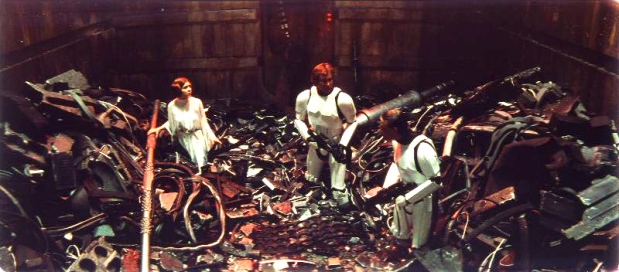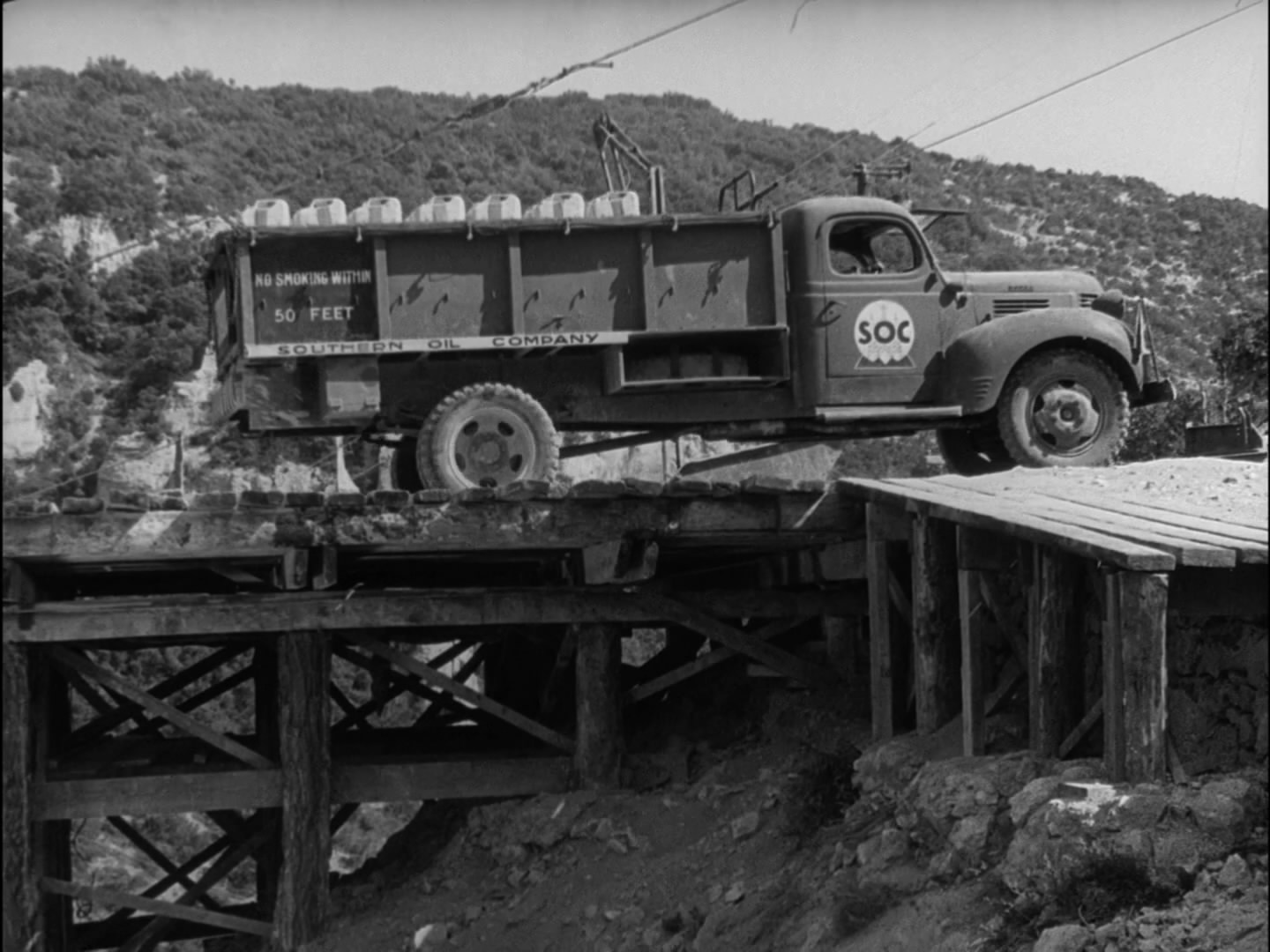Today I’d like to talk about one of the best thriller movies ever made, WAGES OF FEAR. In general, I’m planning on using Thursdays to turn the spotlight towards great thriller novels and films from the past. I view them as all existing in one large bucket, since they relate to one thing: storytelling.
I first learned about WAGES OF FEAR from my former screenwriter boss, Eric Singer. Eric is a hugely talented writer in Hollywood. I worked for three years for him as his writing assistant. He’s responsible for THE INTERNATIONAL as well as the movie that became AMERICAN HUSTLE (for which he was nominated for an Oscar), amongst dozens of other projects. The long and short of it is that I was about twenty-three years old, and I’d spent a year at a management and production company, but I was incredibly wet behind the ears when I started working for Eric. One of the first things he did was write down a list of movies that I had to watch in order to work for him (and really, to be a writer in general).
And at the top of that list was WAGES OF FEAR.
You can look up the wikipedia here for a full plot-outline, but let me talk about what makes Wages of Fear so special. The general logline is: An oil well is on fire. The only way to stop the fire is to blow the oil well up, and the only explosives available in the region are a few trucks filled with nitroglycerin that must traverse a mountainous road in order to reach the well.
The movie is in black and white, directed by Henri-Georges Clouzot, and was released in 1953. It’s not a modern action thriller, and you may find yourself wondering what you’re watching in the first thirty minutes of the film as we layabout in a small village waiting for the action to arrive.
But nonetheless, the movie is a pre-eminent action thriller. It is one of the movies that has informed every single action movie, thriller, and paranoid thriller that followed it. That’s because of the incredible interplay between the setup, the action, and most of all, the tension.
What this movie does so well is allow almost every single moment to be its own, tense, set piece. The setup is simple and it establishes the rules and the action. The rule is: The only way to solve this problem is to get these explosives over the mountain. So now we have two trucks, loaded with nitro, heading down rickety roads, around hairpin turns, and over rotting bridges. Due to the chemical nature of the explosives, any motion, any sudden shudder, any bump in the road is susceptible to disaster. This means that both the small moments, and the large moments, are filled with brimming suspense. The audience knows it. The characters know it. No one is ahead of the other. We are all in it together, we are waiting for it to happen, we are jumping at every single moment in between, and we are not sure what’s going to occur at the end. The recipe for a perfect thriller: It’s not about what’s happening. It’s about what might happen.
Just like Hitchcock said, and I’m paraphrasing, “It’s better to show a bomb underneath a table and then play out a conversation between two people sitting at the table, than it is to show two people at a table who suddenly blow up.” That is the key to tension. Knowing what could happen ahead of time, and caring for the people it will/could happen to, makes the final moment all the more tense… and every passing moment in between as well.
Think about the garbage compactor scene in the original Star Wars movie. This is another classic example of an amazing set piece that plays directly into the same dynamic. As the garbage compactor slowly churns towards Han Solo, Luke, Leia, and Chewy, there is not much inherent “action” save the slow-moving walls, but the scene is incredibly gripping. We are right there with our characters, unsure what’s about to happen, and scared that the conclusion our mind has already made will actually come to horrible truth.

Anyway, I highly recommend WAGES OF FEAR. It definitely belongs on the list of the best thriller movies ever made. It was also remade into a (color) movie called SORCERER, directed by William Friedkin. And it is based on a book, so we really are rounding all the bases here. And that’s a lesson about great storytelling: A solid engine can create endless stories. Imagine how many movies (and books) are simply a derivative of WAGES OF FEAR, and for how many years (read: forever) this particular thriller engine will continue to thrust audiences along. If you’re interested, here are some links to various versions of these movies:



